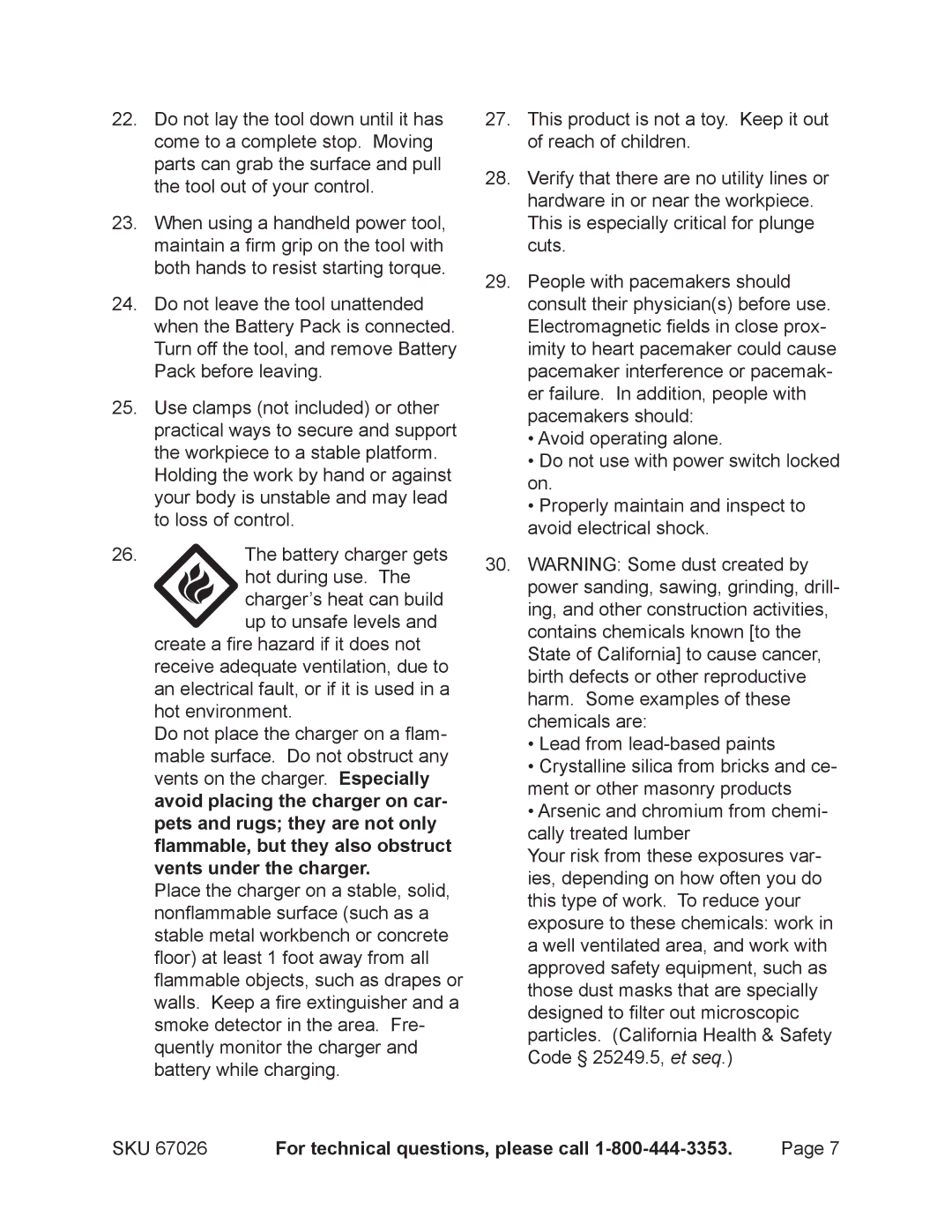
22.Do not lay the tool down until it has come to a complete stop. Moving parts can grab the surface and pull the tool out of your control.
23.When using a handheld power tool, maintain a firm grip on the tool with both hands to resist starting torque.
24.Do not leave the tool unattended when the Battery Pack is connected. Turn off the tool, and remove Battery Pack before leaving.
25.Use clamps (not included) or other practical ways to secure and support the workpiece to a stable platform. Holding the work by hand or against your body is unstable and may lead to loss of control.
26.The battery charger gets
hot during use. The charger’s heat can build up to unsafe levels and
create a fire hazard if it does not receive adequate ventilation, due to an electrical fault, or if it is used in a hot environment.
Do not place the charger on a flam- mable surface. Do not obstruct any vents on the charger. Especially avoid placing the charger on car- pets and rugs; they are not only flammable, but they also obstruct vents under the charger.
Place the charger on a stable, solid, nonflammable surface (such as a stable metal workbench or concrete floor) at least 1 foot away from all flammable objects, such as drapes or walls. Keep a fire extinguisher and a smoke detector in the area. Fre- quently monitor the charger and battery while charging.
27.This product is not a toy. Keep it out of reach of children.
28.Verify that there are no utility lines or hardware in or near the workpiece. This is especially critical for plunge cuts.
29.People with pacemakers should consult their physician(s) before use.
Electromagnetic fields in close prox- imity to heart pacemaker could cause pacemaker interference or pacemak- er failure. In addition, people with pacemakers should:
•Avoid operating alone.
•Do not use with power switch locked on.
•Properly maintain and inspect to avoid electrical shock.
30.WARNING: Some dust created by power sanding, sawing, grinding, drill- ing, and other construction activities, contains chemicals known [to the State of California] to cause cancer, birth defects or other reproductive harm. Some examples of these chemicals are:
•Lead from
•Crystalline silica from bricks and ce- ment or other masonry products
•Arsenic and chromium from chemi- cally treated lumber
Your risk from these exposures var- ies, depending on how often you do this type of work. To reduce your exposure to these chemicals: work in a well ventilated area, and work with approved safety equipment, such as those dust masks that are specially designed to filter out microscopic particles. (California Health & Safety Code § 25249.5, et seq.)
SKU 67026 | For technical questions, please call | Page 7 |
